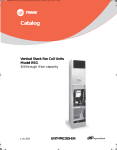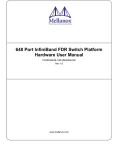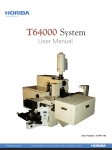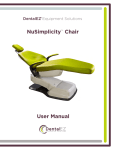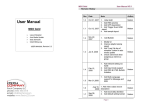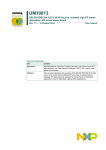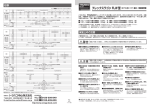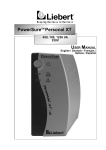Download Zanotti DFZ Specifications
Transcript
DFZ MANUALE USO E MANUTENZIONE USE AND MAINTENANCE INSTRUCTIONS INSTRUCTIONS D'UTILISATION ET D'ENTRETIEN BEDIENUNGS- UND WARTUNGSANLEITUNG MANUAL DE USO Y MANTENIMIENTO To carry out the instructions more easily, open the cover flap containing the key for the various functions ENGLISH GB TABLE OF CONTENTS pag. Preliminary information 48 Important safety warnings 48 Warranty 50 How to order spare parts 51 Disposing of the packing 51 Disposing of the machine 51 1. Description of the machine 52 1.1 Available models 52 1.2 Main technical specifications 52 2. Rating plate 57 3. Description of the central control unit 58 3.1 Description of the display (keys) 4. Operation 58 59 4.1 Before operating the unit 59 4.2 Setting the unit at work 59 4.3 Setting the operating set point 60 4.4 Turning on the refrigeration unit 61 4.5 Defrost 62 4.6 Maintenance 62 4.7 Displaying the temperature chart 63 4.8 Time and display contrast programming 65 4.8.1 Continuous operation 66 4.8.2 Disabling Diesel operation 66 4.8.3 Keyboard block 67 4.8.4 Print or record data 68 4.9 70 Alarms 5. Goods loading procedure GB 74 5.1 Storage and stacking 74 5.2 Mobile partitions 75 5.3 Tips on the temperatures of carried goods 75 5.4 Recommendations on how to best use 75 your refrigerator unit 6. Using the unit safely 76 6.1 Engine coolant 76 6.2 Refrigerants 76 6.3 Battery 76 7. Routine maintenance 77 8. Troubleshooting guide 79 9. "A.T.P. Europe" Regulation 80 Wiring diagram key 82 47 Preliminary information Thank you for choosing one of the models of DFZ ZANOTTI refrigeration units. This manual is addressed to the operators of DFZ ZANOTTI refrigeration units. Inside you will find the necessary information to use and service the products correctly, safety tips, warranty terms as well as suggestions on the best way of transporting your goods. If you follow such instructions, you will be able to minimize the service operations required and to extend the life of your unit. ZANOTTI reserves the right to change the above data without previous notice. Important safety warnings Below you will find some recommendations concerning your safety as well as instructions to follow when installing and using your machine. Installation When installing the unit, take all the necessary precautions (for example, ladders, safety belts, helmets and protection gloves). The unit is fitted in the corresponding hole on the cold room; you just have to introduce the monoblock refrigeration unit into the existent hole and fix it by using the standard bolts and nuts supplied with the product. Battery If the refrigeration unit is left idle for some time, we recommend turning off the machine by pressing the ON/OFF button located on the electronic control unit first and then button 1 (fig. 1). In this way, the electronic control unit is completely de-energized, thus protecting the battery. Disconnect all electric circuits and both batteries (vehicle and refrigeration unit) before attempting any welding operation. 48 Safety Tips By drilling the walls of the unit or the isothermal cold room, you could damage the electric wires or the refrigeration piping. Should such action be strictly necessary, great care should be taken to avoid any damage. Touching turning fans and moving belts can cause irreparable damage or injury. Be careful with the blades of the condenser and evaporator; their edges are very sharp. The refrigeration oil used is a synthetic, mineral-base oil; it can irritate the skin in case of long contacts or if after coming into contact with oil, the affected areas are not carefully washed. GB Refrigerant Some special safety warnings need to be reminded concerning the refrigerant. DO NOT HANDLE THE REFRIGERANT BEFORE READING THE NOTES BELOW. If heated, the refrigerant gives off a gas that irritates the respiratory system. Never heat a closed refrigerating system. Be careful when servicing the refrigeration circuit. On contact with the air, the pressurized refrigerant evaporates and it immediately frostbites whatever is in close contact with it. Should this gas come into contact with the body, below are some first aid measures: 1. Cover the affected area. 2. Quickly heat the frostbitten area with lukewarm water. AVOID USING HOT WATER. 3. If there is no water available, wrap up the affected area carefully with a clean cloth. 4. If the gas comes into contact with the eyes, rinse them immediately with running water and call an ophthalmologist. 49 Engine The PERKINS engines fitted on all DFZ ZANOTTI refrigeration units are designed to keep pollution caused by exhaust gas at a minimum level. However, we strongly recommend to avoid starting the engine in a confined area, as the exhaust gas is toxic. The symptoms caused by carbon monoxide produced by fuel combustion are the following: – dizziness – strong headache – sleepiness – vomiting. If you should experience these symptoms with the engine on, try to breath clean air immediately. Only by having the unit checked on a regular basis you will be able to avoid the troubles associated with its malfunctioning. Warranty Keep your warranty certificate carefully; you will be required to show it whenever your refrigeration unit needs servicing. The machine should be installed according to the diagrams and instructions given by the manufacturer. Any damage due to improper connections is excluded from the warranty. The neutral conductor, even if grounded, is unacceptable as safety conductor. The electrical installation of the place where the unit is installed must comply with the regulations in force applicable to electrical installations. The machine must be used according to the user's instructions and only for the use the manufacturer intended it for. The machine should be serviced by knowledgeable personnel or by the manufacturer. 50 How to order spare parts When ordering spare parts, always include the serial number shown on the machine's rating plate. Disposing of the packing Dispose of all wooden, plastic and polystyrene packing in compliance with the laws in force in the Country where the equipment is used. GB Disposing of the machine Should the machine be scrapped, its components must not be scattered in the environment. They are to be disposed of through a company authorized to collect and recycle special waste, in compliance with the laws in force in the Country where the machine is used. In particular, the refrigerant must absolutely be reclaimed and disposed of by a company authorized to collect special waste. 51 1. Description of the machine The DFZ refrigeration units are made up of the following main components: 1. a condensing unit installed outside the isothermal box; 2. an evaporating unit installed inside the isothermal box; 3. an electronic central control unit located in the driver's cab of the vehicle. All models are suitable to store products both at positive and negative temperatures. 1.1 Available models Available models are: DFZ425 - DFZ430 - DFZ435 - DFZ465 - DFZ495 DFZ465U - DFZ495U The refrigeration unit features two operation modes: on the road and parked. On the road, it uses a compressor driven by an endothermal diesel engine. While parked, it works through a mains-powered electric motor. The set operating temperature is kept automatically. 1.2 Main technical specifications DFZ 425 P. on road P. rmains Refrigeration power 52 Amb. t. 30°C Cold room t. 0°C 4780W 4196W Amb. t. 30°C Cold room t. -20°C 2213W 1721W Road/mains compressor 168 cm3 Road engine Perkins 676 cm3 Condenser fan No. 1 helical-type belt-driven fan Air flow rate 2100 m3/h Evaporator fan N° 2 helical-type direct-drive fans Air flow rate 2200 m3/h Electric motor for mains op. power supply 400/3 /50 Hz – 3000W Refrigerant R404A DFZ 430 P. on road P. rmains Refrigeration power Amb. t. 30°C Cold room t. 0°C 6098W 4951W Amb. t. 30°C Cold room t. -20°C 3724W 3014W cm3 Road/mains compressor 170 Road engine Perkins 676 cm3 Condenser fan No. 1 helical-type belt-driven fan Air flow rate 2100 m3/h Evaporator fan N° 2 helical-type direct-drive fans Air flow rate 2200 m3/h Electric motor for mains op. power supply 400/3 /50 Hz – 3000W Refrigerant R404A GB DFZ 435 P. on road P. rmains Refrigeration power Amb. t. 30°C Cold room t. 0°C 6944W 4242W Amb. t. 30°C Cold room t. -20°C 4575W 3189W cm3 Road/mains compressor 230 Road engine Perkins 676 cm3 Condenser fan No. 1 helical-type belt-driven fan Air flow rate 3200 m3/h Evaporator fan N° 3 helical-type direct-drive fans Air flow rate 3300 m3/h Electric motor for mains op. power supply 400/3 /50 Hz – 4000W Refrigerant R404A 53 DFZ 465 P. on road P. rmains Refrigeration power Amb. t. 30°C Cold room t. 0°C 9500W 7848W Amb. t. 30°C Cold room t. -20°C 5400W 3555W cm3 Road/mains compressor 230 Road engine Perkins 954 cm3 Condenser fan No. 1 helical-type belt-driven fan Air flow rate 3500 m3/h Evaporator fan N° 3 helical-type direct-drive fans Air flow rate 3600 m3/h Electric motor for mains op. power supply 400/3 /50 Hz – 5.500W Refrigerant R404A DFZ 495 P. on road P. rmains Refrigeration power Amb. t. 30°C Cold room t. 0°C 14152W 8520W Amb. t. 30°C Cold room t. -20°C 8246W 54 Road/mains compressor 555 cm3 Road engine Perkins 1496 cm3 Condenser fan No. 1 helical-type belt-driven fan Air flow rate 4800 m3/h Evaporator fan N° 3 helical-type direct-drive fans Air flow rate 4500 m3/h Electric motor for mains op. power supply 400/3 /50 Hz – 7.500W Refrigerant R404A 6057W DFZ 465U (Cubic Evaporator) P. on road P. rmains Refrigeration power Amb. t. 30°C Cold room t. 0°C 10908W 6090W Amb. t. 30°C Cold room t. -20°C 6636W 3868W cm3 Road/mains compressor 235 Road engine Perkins 957 cm3 Condenser fan No. 1 helical-type belt-driven fan Air flow rate 3500 m3/h Evaporator fan N° 3 helical-type direct-drive fans Air flow rate 3600 m3/h Electric motor for mains op. power supply 400/3 /50 Hz – 5,5KW Refrigerant R404A GB DFZ 495U (Cubic Evaporator) P. on road P. rmains Refrigeration power Amb. t. 30°C Cold room t. 0°C 12024W 7944W Amb. t. 30°C Cold room t. -20°C 7183W Road/mains compressor 555 cm3 Road engine Perkins 1496 cm3 Condenser fan No. 1 helical-type belt-driven fan Air flow rate 4800 m3/h Evaporator fan N° 3 helical-type direct-drive fans Air flow rate 4500 m3/h Electric motor for mains op. power supply 400/3 /50 Hz – 7.5KW Refrigerant R404A 4806W 55 DFZ 465U (Flat Evaporator) P. on road P. rmains Refrigeration power Amb. t. 30°C Cold room t. 0°C 9739W 5561W Amb. t. 30°C Cold room t. -20°C 5630W 3098W cm3 Road/mains compressor 235 Road engine Perkins 954 cm3 Condenser fan No. 1 helical-type belt-driven fan Air flow rate 3500 m3/h Evaporator fan N° 3 helical-type direct-drive fans Air flow rate 5875 m3/h Electric motor for mains op. power supply 400/3 /50 Hz – 5,5KW Refrigerant R404A DFZ 495U (Flat Evaporator) P. on road P. rmains Refrigeration power Amb. t. 30°C Cold room t. 0°C 12797W 8580W Amb. t. 30°C Cold room t. -20°C 7115W 56 Road/mains compressor 555 cm3 Road engine Perkins 1496 cm3 Condenser fan No. 1 helical-type belt-driven fan Air flow rate 4800 m3/h Evaporator fan N° 3 helical-type direct-drive fans Air flow rate 7050 m3/h Electric motor for mains op. power supply 400/3 /50 Hz – 7.5KW Refrigerant R404A 6099W 2. Rating plate The DFZ ZANOTTI units are identified by plates located on the right side of the condensing circuit. They contain all the information to be communicated to the technicians in case of servicing, i.e.: – model – serial number – voltage – electrical input – refrigerant – weight of the unit GB 11) Year of manufacture 12) ZANOTTI unit code 13) Serial number 14) Voltage: Road (V d.c.); Mains Supply (V/Ph/Hz) 15) Maximum Absorption (Road) 16) Mains Supply Absorption 17) Mains Supply Maximum Absorption 18) Refrigerating; Quantity 19) Weight of the unit 10) Wiring diagram number Anno / Year Mese / Month 2000 1 2 3 4 5 6 7 8 9 10 11 12 2001 2002 2003 Matricola / Serial number Refrigerante / Refrigerant Kg. 57 3. Description of the central control unit The DFZ ZANOTTI refrigeration units are equipped with a microprocessor-based electronic controller (driver's cabin control) which manages operation in a fully automatic way. In particular, the electronic controller supervises the operations for turning the diesel engine and electric motor on and off depending on the set temperature. Operation selection (diesel or electric) is automatically carried out by connecting the provided plug to the mains. fig. 1 3.1 Description of the display (keys) 1 Electronic ON/OFF Button (This button may also be supplied separately in the built-in driver's cabin control version). 2 HELP: after pressing this key, you will be able to see the meaning of the function keys (at the bottom) just by pressing them. 3 s: it allows increasing the value of any settable parameter. 4 t: it allows decreasing the value of any settable parameter. 5 MENU: it allows going back from any mask to the previous one. 6 Function keys: are the keys located under the display. Their meaning and their icons change depending on the mask where we are. 58 4. Operation 4.1 Before operating the unit 1. Check the belts. In fact, their tension must be perfect in order to prevent them from slipping if they are too slack (as this would generate heat and would therefore shorten the life of the belts) or the bearings from wearing out too fast if the belts are too tight. It is a very easy check: pressing slightly at the center of the longest side of the belt, there should be a slack of 8 to 12 mm (5/16 in. to 15/32 in.) Should such slack be higher or lower, loosen or tighten the belts as required. 2. Carefully check the electrolyte level inside the battery: if it is too low, top it up using distilled water until you reach the right level. Thoroughly check all con- GB nections and fasteners of maintenance-free batteries. 3. Apart from the above mentioned checks, it is advisable to overhaul both the refrigeration unit and the isothermal cold room. The unit must be completely freed from any objects (insects, pieces of paper, etc.) which may have slipped into the condenser air intakes while the vehicle was running. A general check on bolts and electric wires and to locate possible leaks in the system can prove very useful too. Concerning the cold room, check doors, vents, seals, coatings and whatever else may jeopardize the unit's capability of keeping the desired temperature. 4. The last check to carry out is the engine oil level. In fact, you should wait until all the oil has drained from the engine into the sump. After that, check the oil level just as you would in a car. Remove the oil dipper rod, wipe it with a cloth, reinsert it into the sump, withdraw it again. Oil level should be between the maximum and minimum level marks. Top up, if needed. 59 4.2 Setting the unit at work Press push-button 1 to turn on the driver's cabin control. The mask shown in fig. 2 will appear after a few seconds. This mask shows: • TA1: Cold room temperature • SP1: operating set point • current date and time, • type of diesel operation, either slow (LOW) or fast (HIGH). fig. 2 CAUTION Only use push-button 1 to turn off (or on) the electronic control unit if the refrigeration unit is not used. Always use the button only to turn the refrigerator on and off (fig. 2). 4.3 Setting the operating set point Press key . The mask below will be displayed. Press key . The cursor will start blinking under the present SP1 set point value. Press the UP/DOWN key to change such value. Press key to store the defined value. fig. 3 60 If two cold rooms are present, the mask will appear: To program the set point of the second cold room SP2, proceed as follows: - Press key : the cursor will start blinking under the present SP1 set point value. - Press the key until the value relating to SP2 is highlighted. GB - Press the UP/DOWN key to change such value. - Press key to store the defined value. 4.4 Turning on the refrigeration unit Press the button of the driver's cabin control to turn on the refrigeration unit. If diesel operation is underway, engine startup is preceded by an acoustic signal. A maximum of 5 startup attempts are possible after which, if the engine does not start, an alarm is signaled. The diesel engine always starts at maximum speed for a few seconds and then decelerates to minimum speed, remaining in this condition for a time which is determined by the engine's temperature. When this phase has been concluded, the engine's RPM may be varied by pressing the key (fig. 2). If the refrigeration unit is to be used with the electric motor, first press the but- ton to stop the diesel engine. Then connect the provided plug to the mains making sure that the voltage of the mains is equal to that reported on the refrigerator's data plate. The driver's cabin control is therefore automatically prepared for electric operation and the refrigerator unit may be turned on by pressing the button. In this case as well, startup of the electric motor will be preceded by an acoustic signal lasting a few seconds. 61 WARNING If the plug is connected before the diesel engine is stopped using the button (fig. 2), the diesel engine will turn off and the electric motor will come on after approximately 5 minutes. Similarly, if power is interrupted during electric standby, automatic startup of the diesel engine will take place after 5 minutes. 4.5 Defrost Defrost is fully automatic. If needed, a defrost cycle can be forced by pressing key . During defrost, the icon appears in the main mask, on the top left area of the display. 4.6 Maintenance By pressing key on the main mask (fig. 1), you can access the mask below. Then, by pressing key 62 you will go to the maintenance mask shown below. In this mask, you can see for how many hours the oil and oil filter have been used, as well as the total working hours of the diesel engine and electric motor. When the oil or oil filter have been used for over a limit number of hours, the symbol will be displayed on the main mask; then, accessing the maintenance mask the icons or will be displayed, to show that either the oil needs changing or the oil filter element needs replacing. To reset this warning signal, just press the key found by these icons for a few seconds. GB 4.7 Displaying the temperature chart By pressing key you can access the mask below which allows displaying the temperature history record. By pressing key you can display the first 12 hours of the current day, the second 12 hours, or the recording of whole day. By pressing keys and you can move the cursor to see the temperature recorded at a specific time of day. By pressing push button you can go to the 24 hours previous to those dis- played. 63 USER'S HANDBOOK UPDATE The cabin command has a slightly different graphic display and several new functions. The main window is as shown in the figure below: In this window three indications can be seen at the top left: which indicates the automatic function (start/stop); the snow-flake which indicates turning on of cold; which indicates the slow Diesel operational mode. As an alternative to these indications, there could be: which indicates continuous operation; the sun which indicates turning on of hot; which indicates the fast Diesel operational mode. 64 4.8 Time and display contrast programming Starting from the main mask and pressing key first and then key , you will access the mask below. By pressing key you can access the clock programming mask: GB press key to highlight the day, press the key to go from one term to another, press the UP/DOWN key to set the new value. Confirm the new value by pressing key By pressing key . , you can access the mask where you can program the dis- play's brightness and contrast: Press keys Press the or in order to modify display contrast. key to reduce the display's brightness. CAUTION If the driver's cabin control keys are not used for approximately 10 minutes, the display will turn off. To 65 4.8.1 Continuous operation This function allows the start/stop function of the Diesel motor to be cut-out and kept in motion in a continuous way; to activate this function starting from the main window press the key then press the key , instead of , the following window appears: , will appear on the display indicating activation of the continuous function. 4.8.2 Disabling Diesel operation If there is a power failure during electric operation, after a certain period the Diesel motor comes on automatically. There are, however, circumstances in which this automatic working must be prevented, for example during transport by ship. The procedure to be carried out is as follows: starting from the main window, press the key now press and then the key , therefore the following window appears: and the cursor will begin to flash at NO, press the up key to enter YES; lastly, confirm the value entered by pressing the key . In this way the Diesel function is inhibited and in the event of power failure, the main window will be as follows: 66 4.8.3 Keyboard block To prevent unwanted interventions the keyboard blocking function has been introduced; activate it starting from the main window, press the key then the key and , in this way the following window is accessed: GB now press the key , to go to the following window where entering the password will automatically bring up the following window which will be the only one that can be displayed and the on/off key will be the only active key. 67 To unblock the keyboard press the MENU key and re-enter the password in the following window 4.8.4 Print or record data In the following window, reached by pressing and the key from the main window is the key which when pressed accesses the window where the following con be entered: From: the data printing start date To: the end of printing date Evp: which temperature to be printed (evaporator 1, 2 or 3) Res: with what resolution (every 10 min, 20, 30 etc.) Sta: start of printing time Sto. end of printing time Prn: download data on printer or PC 68 starting Example: From: 10/04/01 To: 12/04/01 Evp: 1 Res: 10 min Sta: 12:00 (noon) Sto. 14:00 (2 p.m.) Prn: PRINTER With the data thus entered press the key to print all the data from 10/04/01 GB to 12/04/01 recorded from 12 noon to 2 p.m. every 10 minutes. Whenever using download on PC, the Hyperterminal present in the windows accessories must be accessed. Carry out a new connection (giving it a name), enter the COM on which to connect the PC and enter the following properties in the window: bit per second 9600 bit of data 8 parity nil stop bit 1 hardware flow control when click OK. At this point the PC is ready to receive the data that will be sent by pressing the key on the control cabin. The data thus transmitted can be stored on file simply by selecting Save from the File menu. Each time this program is accessed it will no longer be necessary to enter all the data as described above; simply open the connection created (which has been given a name). 69 4.9 Alarms Every time an alarm occurs, the icon starts blinking and the buzzer goes off. To silence the buzzer, just press any key. To see the alarm mask, press key ; in this way, you will access the mask below where you will see the different alarm codes. Each alarm code has a relevant description which can be seen in the string at the bottom of the display. ON indicates an active alarm status while OFF indicates a non-active one. To go from an alarm code to the next, you should press key alarm page, you should press key To go to the next . There are essentially three types of alarms: – warning only, – with automatic reset, – with manual reset. Warning alarms do not change the operation of the machine at all. They just indicate that there is a minor trouble, such as the air filter alarm. Automatic reset alarms cause the unit to stop until the reason for the alarm has disappeared. Once the cause of the alarm has been cleared, the unit will automatically restart and the alarm status will go from ON to OFF. Two asterisks by the alarm code show than an alarm has occurred. Manual reset alarms turn the unit OFF permanently until the alarm has been cleared and reset on the central control unit too. RESETTING THE ALARMS Resetting the alarms is an operation required to clear the warning that an alarm has occurred, in the case of automatic reset alarms or to allow the unit to restart, in the case of manual reset alarms. To carry out this operation, just press key 70 . Alarm code Description Type A01 Water temperature alarm Automatic reset A02 Oil pressure alarm Manual reset A03 Thermal relay alarm Manual reset A04 Pressure switch alarm Automatic reset A05 Low battery level alarm Automatic reset A06 Damaged room sensor alarm Manual reset A07 Damaged defrost sensor alarm Warning only A08 Starting failure/damaged alternator Manual reset A09 High/low temperature alarm Warning only A10 Radiator water level alarm Warning only A11 Oil level alarm Warning only A12 Air filter alarm Warning only A13 Oil filter alarm Warning only A14 Power card not present Automatic reset A15 Damaged condensing sensor alarm Warning only A16 Damaged water sensor alarm Warning only A17 Door switch open alarm Automatic reset GB A01 Water temperature alarm This occurs when the radiator's water temperature exceeds the permitted value. It turns off the diesel engine until the temperature returns to normal values. A02 Oil pressure alarm This alarm occurs if the engine's oil pressure drops; it permanently turns off the diesel engine. To start the machine again, the alarm must be reset using the procedure described in the paragraph above and by pressing the ON/OFF key. A03 Thermal relay alarm This alarm occurs if abnormal electric motor current input values occur and it turns off the machine. To reset the alarm, the machine must be de-energized, the electrical switchboard must be opened, and the thermal relay must be reset by pressing the blue button. Then close the switchboard and energize the machine again. Go to the driver's cabin control and press the ON/OFF key. 71 A04 Pressure switch alarm This alarm occurs when either the high or low pressure switch trips. The high pressure switch may trip due to poor cleaning of the condenser or loosened condenser fan belts. The low pressure switch may trip due to refrigerant leaks. By tripping it causes the machine to stop until the alarm itself disappears. A05 Low battery level alarm This alarm occurs if battery power is lower than 11.5V. It turns the machine off until power remains above 11.5V for at least 1'. Warning: making the engine work for short periods (with frequent peaks) causes the battery to exhaust. A06 Cargo area sensor failure alarm This alarm causes the machine to permanently stop until the problem has been solved. To start the machine again, it must be reset using the procedure described in the paragraph above and the ON/OFF key must be pressed. A07 Defrost sensor failure alarm It is a warning alarm which has no consequences on the operation of the machine. A08 Starting failure/damaged alternator This alarm may occur if the diesel engine did not start after the maximum number of startup attempts (factory-set at 5). Possible causes include: broken alternator, loose belts, no fuel. If the same alarm occurs during electric standby, it should be attributed to a broken alternator. To start the machine again, you need to reset the alarm by following the procedure described in the above section and press the ON/OFF key . A09 High/low temperature alarm This alarm occurs if the differential between actual temperature of the cold room and the temperature value set using the control exceeds a factory-set limit. It is a warning alarm which has no consequences on the operation of the machine. A10 Radiator water level alarm (optional) It is a warning alarm which has no consequences on the operation of the machine. 72 A11 Oil level alarm (optional) It is a warning alarm which has no consequences on the operation of the machine. A12 Air filter alarm This alarm occurs if the air filter cartridge is clogged. Replace the cartridge. It is a warning alarm which has no consequences on the operation of the machine. A13 Oil filter alarm (optional) It is a warning alarm which has no consequences on the operation of the machine. A14 Power card not present GB This is a warning alarm which occurs if connection between the power card and the driver's cabin control is missing. A15 Damaged condensing sensor alarm (optional) It is a warning alarm which has no consequences on the operation of the machine. A16 Damaged water sensor alarm It is a warning alarm which has no consequences on the operation of the machine. A17 Door switch open alarm This alarm occurs if the protection grate located on the machine is open. This alarm prevents motor startup. 73 5. Goods loading procedure 5.1 Storage and stacking One of the main concerns to take into account when storing goods, is how to ensure proper air circulation in the isothermal cold room. If the air cannot circulate freely throughout the cargo, ice or warm areas will almost certainly develop, which could irreparably damage the goods. One of the first tips to avoid this, is to store the goods on pallets. If loaded in a proper way, palletized goods will allow the air to circulate freely into and out from the evaporator. Furthermore, they will be protected by the pallet from the heat passing through the floor of the trailer. Proper air circulation is extremely important too when stacking the goods. In fact, some goods tend to produce heat, while others don't. Fruit and vegetables, for example, belong to the first group. In this case, the goods should be stacked in such a way as to ensure good air circulation through the cargo. Those items which do not generate any heat, such as meat, deep frozen products and fresh packaged products, should be stacked in the center of the cold room. Avoid positioning the goods leaning on the cold room walls. In fact, the walls filter heat from the environment, which is most damaging to this type of goods. The DFZ ZANOTTI refrigeration units are designed to keep the goods at their loading temperature. The DFZ ZANOTTI refrigeration units are not suitable to refrigerate warm products. 5.2 Mobile partitions There are different minimum clearances at which mobile partitions should be placed, depending on the DFZ ZANOTTI refrigeration unit model. Such clearances are: • DFZ 435: 1400 mm / about 4' 7 1/2" • DFZ 465: 1800 mm / about 6' • DFZ 495: 2700 mm / about 9' The air pipes of the evaporator should always be left undisturbed. 74 5.3 Tips on temperature of carried goods Product -Reference temperature Bananas -15°C (55/60°F) Fresh fruit and vegetables -4/6°C (39/43°F) Fresh meati and seafood -2°C (36°F) Milk and dairy products -2/6°C (36/43°F) Ice-cream -20/-25°C (-15/-20°F) Deep frozen fruit and vegetables -18°C (0°F) Deep frozen meat and fish -20°C (-10/0°F) THESE TEMPERATURES ARE FOR REFERENCE PURPOSES ONLY. ANY TEMPERATURE SUPPLIED BY RECEIVER OR CARRIER WILL PREVAIL. GB 5.4 Recommendations on how to best use your refrigerator unit • Make sure the doors remain open as little as possible. • Before selecting the required cold room temperature, check the temperature of the goods to be carried. • 0/15 cm (4/6 in) is the minimum clearance between the cargo and the walls of the cold room. • When parking, leave your vehicle in the shade and make sure that the DFZ ZANOTTI refrigeration unit does not remain idle for a long time. 75 6. Using the unit safely The DFZ ZANOTTI units are built to keep the operators safe. The use of protection gloves is, in any case, fundamentally important during controls, repairs, and maintenance for every action which the operator must carry out inside the unit, whether when handling the evaporator or the condenser which can injure his hands with their fins or to avoid burns caused by accidental contact with the unit's hot parts. 6.1 Engine coolant The DFZ ZANOTTI units, like all engines, are equipped with a cooling device. A spill or release of coolant can cause severe burnings due to the fact that, under normal operation conditions, such coolant is subject to high pressures and temperatures in the engine and radiator. Don't ever remove the cap from a hot radiator. If such operation should prove absolutely necessary, unscrew it very carefully so as to allow pressure to stabilize slowly and evenly. 6.2 Refrigerants The refrigerant contained in the refrigeration system can cause serious injuries if it should come into contact with any part of the body: burnings, frostbite and even blindness, if it comes into direct contact with the eyes. That's why the regulations applicable to the handling of refrigerants during maintenance operations provide that the customer calls the nearest service center to have the unit service or repaired. 6.3 Battery It is strictly forbidden to smoke while checking the unit. In fact, the batteries release small amounts of hydrogen which by igniting can cause the battery to explode and the operator to be seriously injured or blinded. 76 7. Routine maintenance MAINTENANCE INTERVALS Action 50 hours or 15 days Check the concentration of coolant • Check the trapezoidal belts for tension and wear • Check and adjust the engine RPM • Check that all screws and nuts are well tightened • • Check that the injectorsare working properly Clean the air filter 1000 hours or 10 months • GB Replace the filtering element of the air filter (if needed) • Clean the fuel pump filter • Check that the coolant thermostat and the engine oil pressure switch are working properly • Check the terminals and the electrolyte level in the battery • Change lubricating oil • Replace the lubricating oil cartridge • Warning • Check coolant and lubricating oil levels every day. • Use synthetic oil with 15W-40 viscosity. 77 Important • Carry out the following maintenance operations after one year: - renovating refrigerant, - checking and adjusting valve clearances, - checking that the cylinder heads are well tightened, - checking that the injectors are in good working condition. BELTS Properly tensioned belts allow a good transmission and wear out less. Caution: should one of the pairmounted belts need servicing, it is ABSOLUTELY necessary replace both belts. FILTERS 1. Oil filter 2. Diesel fuel filter 3. Air filter 78 to 8. Troubleshooting guide Trouble Checks to carry out On turning on, the engine does not start • Flat battery. • Battery connections. • Fuses. The unit won't start • Fuel level. • Engine oil level. • Fuses. The unit jams • • • • • The unit does not cool properly Belts tension. Engine oil level. Coolant level. Fuel level. Fuses. GB • Defrost the unit. • Something hinders the proper ventilation of the evaporator. • Something hinders the proper ventilation of the condenser. • The isothermal cold room might be damaged or have leaks. Should you find any other faults, check the alarm pages on the keyboard located on the vehicle's dashboard. In case of further problems, contact the nearest ZANOTTI dealer. 79 9. Abstract of the “A.T.P. Europe” regulation (march 1974) Authorization for vehicles used to carry perishable foodstuffs. Prior to the beginning of its operation, the refrigerated vehicle must be authorized by the Departmental Veterinary Service. CHARACTERISTICS OF VEHICLES USED TO CARRY PERISHABLE FOODSTUFFS REFRIGERATED VEHICLE. A refrigerated vehicle is an isothermal vehicle equipped with a refrigeration device which, considering an average +30°C/86°F ambient temperature, allows making the temperature inside the empty isothermal box drop and keeping it constant in the following way: • CLASS A: refrigerated vehicle equipped with a refrigeration device which allows selecting any temperature between +12°C and 0°C, both included. • CLASS B: refrigerated vehicle equipped with a refrigeration device which allows selecting any temperature between +12°C and -10°C, both included. • CLASS C: refrigerated vehicle equipped with a refrigeration device which allows selecting any temperature between +12°C and -20°C, both included. The refrigeration power of a unit is determined through an examination carried out at an authorized testing station and certified by an official report. Note: the "K" factor of vehicle bodies to be included in class C must be equal to, or lower than 0.4 W/m2°C. 80 SYMBOLS, ITEMS AND IDENTIFICATION PLATES TO BE AFFIXED ON REFRIGERATED VEHICLES. Refrigeration plate: this wording must be followed by the identification items according to the following list: • Class A standard refrigerated vehicle FNA • Class A reinforced refrigerated vehicle FRA • Class B reinforced refrigerated vehicle FRB • Class C reinforced refrigerated vehicle FRC In addition to the above mentioned identification items, the plate must also show GB the expiry date of the authorization certificate (month and year), for example: FRC 6-2000 (6 = month (June) 2000 = year) Important Check the expiry date on the authorization certificate on a regular basis. During transportation, the authorization certificate or the temporary certificate must be produced to the authorized agents upon their request. In order to obtain an authorization to use an isothermal vehicle as a refrigeration group, a request to change the authorization certificate must be sent to the regional health boards. 81 Wiring diagram key ALT Alternator KFP Diesel fuel pump relay BA Room sensor KPO Oil pressure switch relay BH Radiator sensor KPR-1-2 Crankcase heating relay E1 Glow plugs KRF Timer for cooling fan delay ES Heaters on condensate KSF Phase sequencer drain pipes KYAV High speed solenoid valve relay FM1 Automatic switch KYS Defrost solenoid valve relay F1E Electronic control unit KS1 Central control unit F8-9-10 Evaporators fans fuses F1 Fuse for auxiliary evaporator M1 Electric motor fan M8-9-10 Evaporator fans motors Cooling-cycle solenoid fuse for MP Door switch auxiliary evaporator MECC-DA Electric output card Heating-cycle solenoid fuse for MECC-DB Electric output card auxiliary evaporator MECC-DT Cooling fan card F11 Cooling fan fuse MRF Cooling fan F20 Fuse for card input protection MTA Starting motor FA Air filter PMI Low pressure switch FA1-FA8 Auxiliary circuit fuses PMX High pressure switch FB Battery fuse PN Diesel fuel pump FTQ Water temperature PO Oil pressure switch thermostat EC Alternator emergizing resostor F3 F4 82 power supply relay FTS Defrost Klixon H Mechanical hour meter S2 Remote control unit ON/OFF HI Bell SF Diesel fuel pump emergency K1 Electric motor contactor K10 Evaporator fan relay K2 Phase reversal contactor KVE Evaporator fan relay K8 Evaporator fan relay K9 Evaporator fan relay YAV High speed solenoid valve K94 Starting up relay YN Diesel fuel stop solenoid valve KAA Auxiliary water relay YS Defrost solenoid valve KFTQ Auxiliary water relay YF Cooling-cycle solenoid KF Cooling-cycle relay YC Heating-cycle solenoid KC Heating-cycle relay X Terminals in emergency switch SPM Glow plugs/ emergency start push-button SV Evaporator fans emergency switch Tagliando di garanzia Guarantee coupon - Coupon de garantie - Garantieabschnitt - Cupón de garantía 50 ORE O 15 GIORNI DALLA MESSA IN SERVIZIO 50 hours or 15 days from start-up date - 50 heures ou 15 jours à partir de la mise en service Stunden oder 15 Tage ab Inbetriebsetzung - 50 horas o 15 días a partir de la puesta en marcha Data Timbro officina autorizzata ZANOTTI Date - Date - Datum - Fecha Seal of the ZANOTTI authorized repair shop - Tampon du centre agréé ZANOTTI Stempel der autorisierten ZANOTTI-Werkstatt - Sello del taller autorizado ZANOTTI Ore funzionamento Hours of operation - Heures de fonctionnement - Betriebsstunden - Horas de funcionamiento N. documento Document no. - N° de document - Dokumentennummer - N° de documento 1000 ORE O 10 MESI DALL’ULTIMO TAGLIANDO 1000 hours or 10 months from the last service - 1000 heures ou 10 mois à partir du dernier coupon de révision 1000 Stunden oder 10 Monate ab der letzten Wartung - 1000 horas o 10 meses a partir de la última revisión Data Timbro officina autorizzata ZANOTTI Date - Date - Datum - Fecha Seal of the ZANOTTI authorized repair shop - Tampon du centre agréé ZANOTTI Stempel der autorisierten ZANOTTI-Werkstatt - Sello del taller autorizado ZANOTTI Ore funzionamento Hours of operation - Heures de fonctionnement - Betriebsstunden - Horas de funcionamiento N. documento Document no. - N° de document - Dokumentennummer - N° de documento 1000 ORE O 10 MESI DALL’ULTIMO TAGLIANDO 1000 hours or 10 months from the last service - 1000 heures ou 10 mois à partir du dernier coupon de révision 1000 Stunden oder 10 Monate ab der letzten Wartung - 1000 horas o 10 meses a partir de la última revisión Data Date - Date - Datum - Fecha Timbro officina autorizzata ZANOTTI Seal of the ZANOTTI authorized repair shop - Tampon du centre agréé ZANOTTI Stempel der autorisierten ZANOTTI-Werkstatt - Sello del taller autorizado ZANOTTI Ore funzionamento Hours of operation - Heures de fonctionnement - Betriebsstunden - Horas de funcionamiento N. documento Document no. - N° de document - Dokumentennummer - N° de documento Tagliando di garanzia Guarantee coupon - Coupon de garantie - Garantieabschnitt - Cupón de garantía 1000 ORE O 10 MESI DALL’ULTIMO TAGLIANDO 1000 hours or 10 months from the last service - 1000 heures ou 10 mois à partir du dernier coupon de révision 1000 Stunden oder 10 Monate ab der letzten Wartung - 1000 horas o 10 meses a partir de la última revisión Data Timbro officina autorizzata ZANOTTI Date - Date - Datum - Fecha Seal of the ZANOTTI authorized repair shop - Tampon du centre agréé ZANOTTI Stempel der autorisierten ZANOTTI-Werkstatt - Sello del taller autorizado ZANOTTI Ore funzionamento Hours of operation - Heures de fonctionnement - Betriebsstunden - Horas de funcionamiento N. documento Document no. - N° de document - Dokumentennummer - N° de documento 1000 ORE O 10 MESI DALL’ULTIMO TAGLIANDO 1000 hours or 10 months from the last service - 1000 heures ou 10 mois à partir du dernier coupon de révision 1000 Stunden oder 10 Monate ab der letzten Wartung - 1000 horas o 10 meses a partir de la última revisión Data Timbro officina autorizzata ZANOTTI Date - Date - Datum - Fecha Seal of the ZANOTTI authorized repair shop - Tampon du centre agréé ZANOTTI Stempel der autorisierten ZANOTTI-Werkstatt - Sello del taller autorizado ZANOTTI Ore funzionamento Hours of operation - Heures de fonctionnement - Betriebsstunden - Horas de funcionamiento N. documento Document no. - N° de document - Dokumentennummer - N° de documento 1000 ORE O 10 MESI DALL’ULTIMO TAGLIANDO 1000 hours or 10 months from the last service - 1000 heures ou 10 mois à partir du dernier coupon de révision 1000 Stunden oder 10 Monate ab der letzten Wartung - 1000 horas o 10 meses a partir de la última revisión Data Date - Date - Datum - Fecha Timbro officina autorizzata ZANOTTI Seal of the ZANOTTI authorized repair shop - Tampon du centre agréé ZANOTTI Stempel der autorisierten ZANOTTI-Werkstatt - Sello del taller autorizado ZANOTTI Ore funzionamento Hours of operation - Heures de fonctionnement - Betriebsstunden - Horas de funcionamiento N. documento Document no. - N° de document - Dokumentennummer - N° de documento 0MAN129A del 10/2002 ZANOTTI S.p.A. 46020 PEGOGNAGA (Mantova) - Italy Via Martin L. King, no 30 - Tel. (0376) 5551- Telefax (0376) 536554 E-mail: [email protected] - Internet: http://www.zanotti.com












































